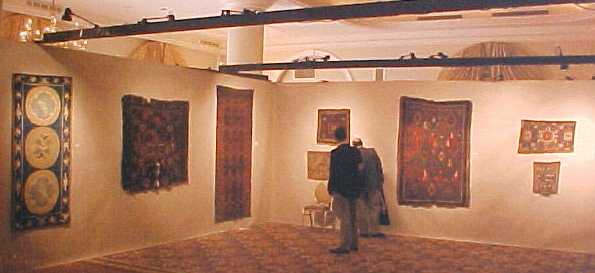
For 2500 years, from the ceremonial procession of reindeer and horses found in the Pazyryk carpet (500 BCE) to the incidental and scattered stick figures of birds and stags in modern Caucasian rugs, animals have been depicted in rugs.
The human tendency to portray animals in art finds expression not only in th naively drawn barnyard creatures of a small village rug as well as in the precisely and elegantly rendered beasts of a Safavid or Moghul court carpet, but also in the disgusied or hidden animals commonly found in many carpets, most notably in Turkmen tribal and Turkish village rugs.
Such disguised or hidden animals may be a sign of a weaver's attempt to evade Islamic religious interdictions against the representations of animals in art. The practice may suggest the enduring influence of shamanistic animal worhip characteristic of early Central Asian religions seen prominently in Scythian art.
The common motif of birds flanking a tree can be seen in cryptic form in the Sarkislar rug in this exhibition. Nearly unrecognizable animal may appear in the spokes or as spokes of wheel-like medallions such as in the Belouch Khorjin and the Turkish Village rug. Shamanistic beliefs can also be inferred from the flayed "pelt-like" shape of the field area of many oriental rugs. The soumak piece with the "bug" design is a representative example.

 Dumas
Dumas
Japanese "Dantsu" tea rug
c. 1800
2'10" x 6'0"
Cotton pile
Knot: 6H x 5V
Dumas collection
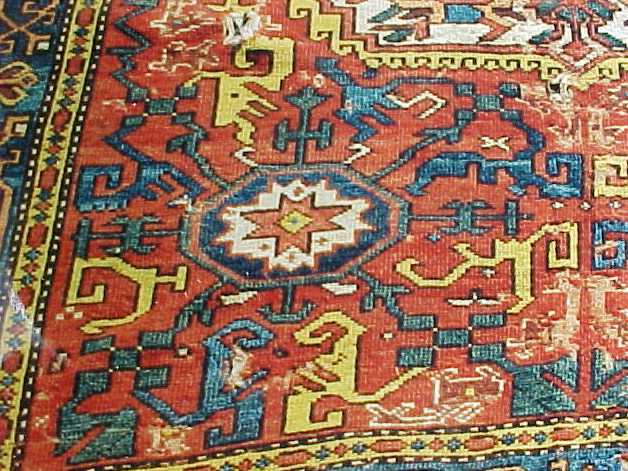 Dixon
Dixon
Anatolian Village Rug
15-17th c.
4'8" x 4'4" (fragment)
single ply weft
knot: 7H x 8V
Scorpian-like forms surrounding small octogons
Dixon Collection

Moghul Fragment
17th-18th c., India
3'6" x 1'9"
Knot: 9H x 12V
Warp: 5 ply cotton
Dixon collection
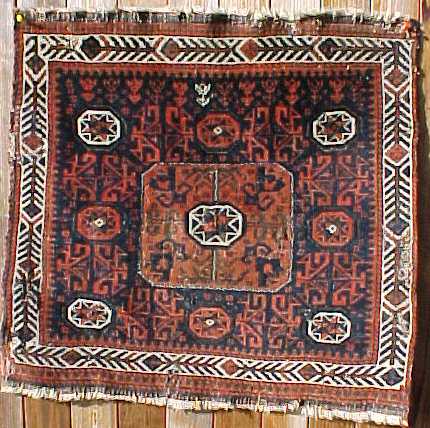 Dumas
Dumas
Balouch Khorjin
19th c.
2'3" x 2'1"
Knots 11H x 12V
Animals disguised as geometric forms
in the four corners of the central octagon
reminiscent of Scythian reindeer
Dumas Collection
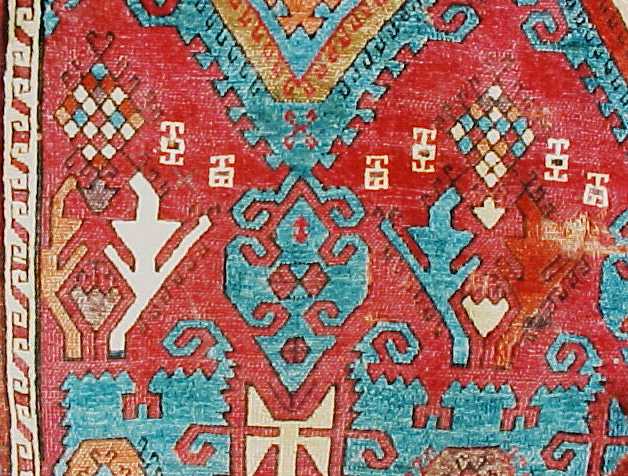 Dixon
Dixon
Sarkislar rug, Anatolia
Probably 17th c.
4'3" x 5'9"
warp dyed red
diagonal knotting
Knot 7H x 9V
Long-tailed bird forms flanking trees
between concentric diamonds
Dixon Collection
 Childress
Childress
Soumak Mafrash Side Panel
Shahsevan
19th c.
3' x 1'9"
Bedding bag side panel woven in the "bug"
or "flayed pelt" design, more commonly seen on
saddle bags
Childress collection
 Childress
Childress
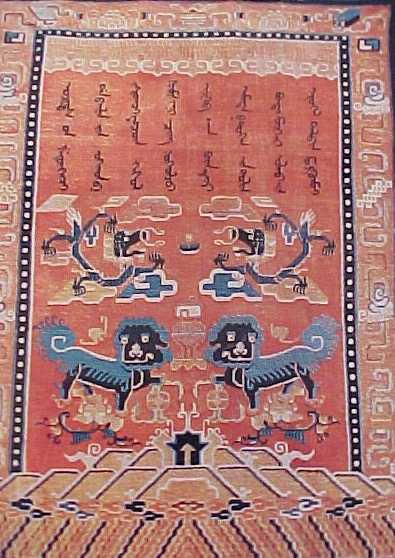 Eiland
Eiland
Chinese rug with a Mongolian inscription
Ninghsia, China
early 19th c.
5'5" x 7"
knot: 6H x 7V
The inscription reads: "The servants of the shrine of the
founding prince and organizer of the Urdus, wangcun gesul
and Sonom, believing firmly, presented [the rug]. [We] bow
down offering a benediction that by this beneficence we may
find the bodhi path for the benefit of all living creatures."
Eiland collection
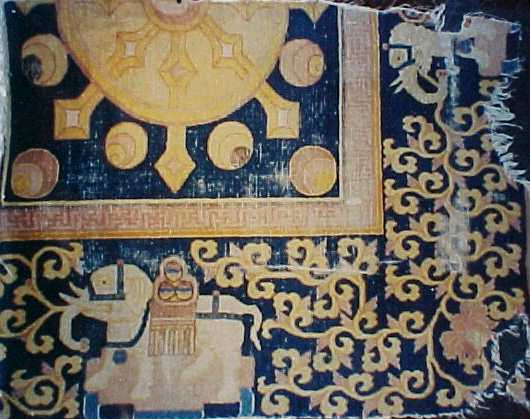 Lyman
Lyman
Chinese rug fragment with Elephant border
and Buddhist symbols
China
17th/18th c.
4'11" x 6'4"
Lyman collection
 Lyman
Lyman
 Lyman
Lyman
Chinese rug with Wrathful Tibetan deity
Ninghsia, China
18th c. or earlier
3'11" x 4'7"
Lyman Collection
 Dixon
Dixon
Turkish Village rug
See detail above
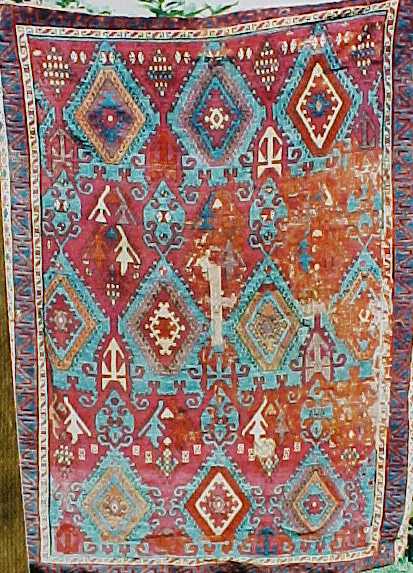 Dixon
Dixon
Sarkislar rug
See detail above
(some of the rugs selected were not available for the show)